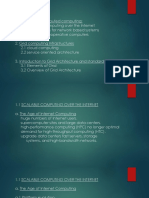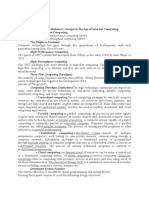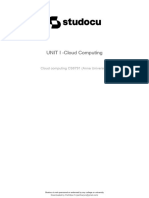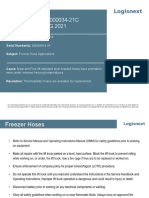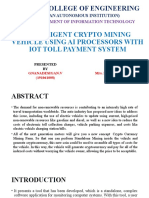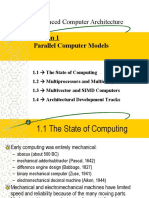0% found this document useful (0 votes)
6 views8 pagesModule 1 CC Simplified
The document discusses the evolution and trends in scalable computing over the Internet, highlighting the shift from high-performance computing (HPC) to high-throughput computing (HTC) and the emergence of new paradigms like cloud computing and the Internet of Things (IoT). It emphasizes the importance of distributed systems, resource sharing, and innovative applications across various sectors, while also addressing technological challenges and performance metrics. Additionally, it covers the significance of fault tolerance and system availability in the design of distributed computing systems.
Uploaded by
Srushti Reddy VCopyright
© © All Rights Reserved
We take content rights seriously. If you suspect this is your content, claim it here.
Available Formats
Download as PDF, TXT or read online on Scribd
0% found this document useful (0 votes)
6 views8 pagesModule 1 CC Simplified
The document discusses the evolution and trends in scalable computing over the Internet, highlighting the shift from high-performance computing (HPC) to high-throughput computing (HTC) and the emergence of new paradigms like cloud computing and the Internet of Things (IoT). It emphasizes the importance of distributed systems, resource sharing, and innovative applications across various sectors, while also addressing technological challenges and performance metrics. Additionally, it covers the significance of fault tolerance and system availability in the design of distributed computing systems.
Uploaded by
Srushti Reddy VCopyright
© © All Rights Reserved
We take content rights seriously. If you suspect this is your content, claim it here.
Available Formats
Download as PDF, TXT or read online on Scribd
/ 8













